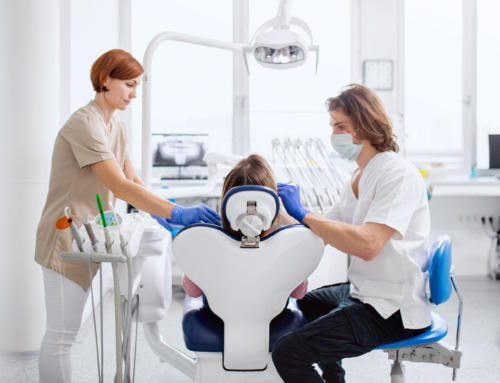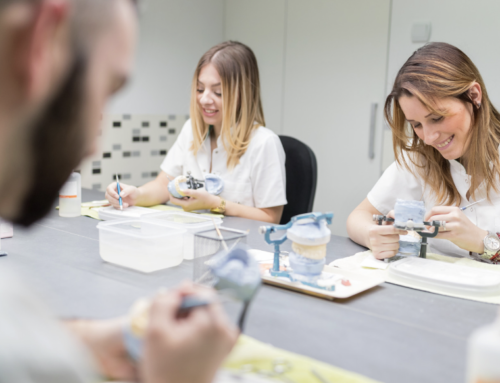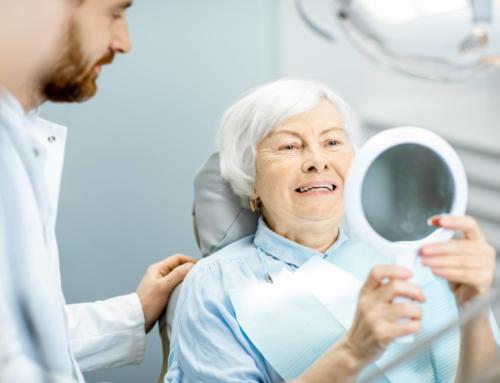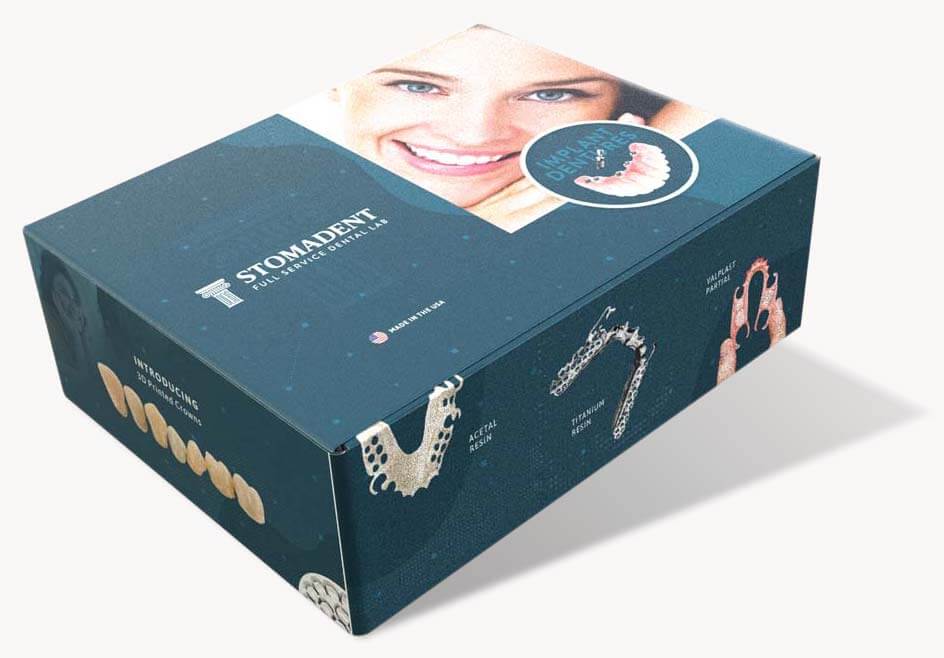
By David Hudnall, DMD
Transitioning from terminal, non-restorable dentition to dentures is a life-changing process, not a single event. For patients, a mix of anxiety and anticipation often accompanies the process. While immediate dentures allow patients to continue to function in their everyday lives without a period of having no teeth at all, patients sometimes have unrealistic expectations, are surprised by the outcome, or are disappointed by the results, leading to confusion and anger.
Let’s discuss some of the best immediate denture practices and methods that help to manage patient expectations and improve understanding.
Preparing Patients for Immediate Denture Procedure
For an immediate denture to be successful, both the dental professional and the patient must be on the same page. One of the chief complaints from patients about their immediate dentures falls into the category that they didn’t know what to expect. Therefore, it is critical for the dental professional to discuss the reality of immediate dentures and manage expectations in advance of the procedure. There is much information and misinformation about the immediate denture process for patients to absorb and understand.
Patients who comprehend that guesswork is involved in the procedure and remain focused on the fact that immediate dentures are designed to be temporary tend to thrive with immediate dentures and are happier with the results. It is far easier to under-promise and over-deliver than to deal with a distraught patient who is unhappy and feels that the process was somehow misrepresented by the dentist.
That said, dentists should discuss not only the treatment they will receive prior to and on the day of the surgical procedure but also the necessary follow-up care that goes along with oral surgery, including the recovery process, aftercare, denture adjustments, the learning curve associated with using dentures, relines, and replacement dentures in the months ahead. It helps to provide a written checklist that patients can hang on their refrigerators to remind them when they can expect each procedure to be performed following immediate denture placement.
Best Methods for Practitioners
Dentists have much to consider when planning an immediate denture case. Aside from planning a procedure that you may have performed many times over the course of your career, never lose sight of the individual patient during the process.
Anatomy, excess bone, dental phobias, patient health, denture modifications, relines, and final dentures make each case unique and are all part of the total immediate denture package.
Importance of Preparation/First Stages
Because every patient’s anatomy is different, preparation and long-term planning are key for the best immediate denture results. In addition to tooth extractions, bone modification such as alveoloplasty, tori reduction, removal of exostoses, or even bone grafting procedures that prepare the patient’s topography for future dental appliances often accompany tooth removal.
Because of this, some clinicians find it helpful to capture impressions of cases requiring bone reduction with traditional impression materials, create casts that may be trimmed or altered to account for planned changes in the bone structure, and have the denture lab scan the modified models for incorporation into the digital workflow. Having trimmed models available also allows for the fabrication of surgical stents to aid in the planning of the procedure and to help guide the surgeon throughout the bone modification process, making the immediate dentures more likely to fit reasonably well.
The presence of periodontal disease can also have a big effect on the outcome of an immediate denture case. When patients have severely extruded or mobile natural teeth, obtaining an accurate traditional impression can be nearly impossible. This is where scanning impressions excel. Still, predicting how much the gum tissue will shrink immediately after tooth extraction can prove to be challenging.
Once the source of inflammation is removed, gum tissue acts like a bicycle tire, with the air being let out. Good communication with your lab technician allows the digital model to be reduced more heavily for advanced periodontitis patients, compensating for loose or swollen tissue that shrinks rapidly post-treatment.
Perfect Impressions Make Perfect Patient Results
The accuracy of your impression is critical to the success of any restorative dental appliance. Immediate permanent dentures are no exception. Scanned impressions that are easily incorporated into a digital laboratory workflow offer the best opportunity for the patient and the dentist to receive the results that they both desire.
While guesswork remains a part of the immediate denture fabrication process, many variables can be controlled or minimized with digital immediate dentures. Computer-aided design allows for the perfect tooth arrangement to be manufactured that fits the exact shape of the patient’s alveolar ridge and works around missing teeth, providing dentures with greater stability during function.
Refined Reline Process
Although you have prepared and taken steps to produce an ideal immediate denture, rarely does a permanent denture fit without modifications. While sometimes immediate dentures fit correctly with minimal adjustments, relining a denture immediately or soon after delivery is usually required to improve fit and patient comfort.
Plan time for both temporary and processed relines as the mouth heals and prior to the patient’s final dentures.
Navigating the Compromised Jaw and Patient Health
Having a complete and accurate health history is of paramount importance for treating immediate complete and partial denture patients. The patient’s overall health determines everything about treatment, including if the patient is medically-compromised or whether the patient’s health is best managed by an oral surgeon or in a hospital setting. While medications schedules for the vast majority of patients can be modified by consulting with their physician, there are health issues that preclude invasive treatment entirely or require that treatment be divided into multiple appointments, necessitating a more traditional approach to performing immediate dentures – the removal of the posterior remaining teeth and allow healing prior to removing the anterior teeth and delivery of a temporary denture.
Related to the patient’s health is the patient’s level of anxiety and their ability to tolerate surgical dental treatment. Some patients require nitrous oxide or some form of sedation in order for the procedure to be performed. The patient’s health is also a determining factor when considering use of certain sedative agents or anxiety-reducing drugs, as patients who take specific medications or have certain health problems may have drug-related interactions or contraindications for sedation, especially in an outpatient setting.
Ideally, patients who have suffered bone loss from periodontal disease would have dental implants to help stabilize their dentures. However, even with bone grafting, the shear lack of bone height or poor patient health may preclude the patient from receiving implants. So, what can done? Place a series of soft relines to help stabilize immediate dentures during the healing phase. Then replace the transitional dentures with high quality milled dentures that adapt closely to the anatomy while restoring form, function, and facial support.
The Value of a Top Dental Lab
While no immediate denture is perfect, modern dental labs with the ability to incorporate CAD/CAM technology into the immediate denture design and fabrication process yield better, more exacting results. However, even with availability of the best techniques and equipment, there is no substitute for experience.
How many cases has your denture technician performed using their current manufacturing method of choice? Ideally, you would choose to work with a lab that understands the issues related to immediate dentures and will work with you to make the delivery process as seamless as possible.
Premier Immediate Dentures with Stomadent Dental Lab
Why trust your immediate denture case to just anyone when Stomadent Dental Lab offers both experience and expertise that allows you to get the best results? Utilizing CAD/CAM technology, our immediate denture services include traditional dentures as well as 3D printed temporary dentures. Accept only excellent imaging for partial dentures, complete dentures, and more.
Let Stomadent be an extension of your office and a resource for all immediate denture related products!

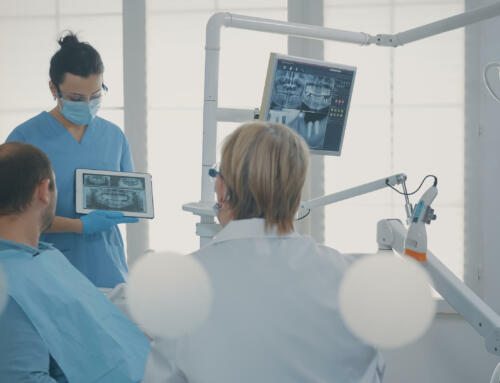
![The Lucitone Denture Advantage [Best Practices + Advice]](https://stomadentlab.com/wp-content/uploads/2022/08/lucitone-promo-1-500x383.jpg)

